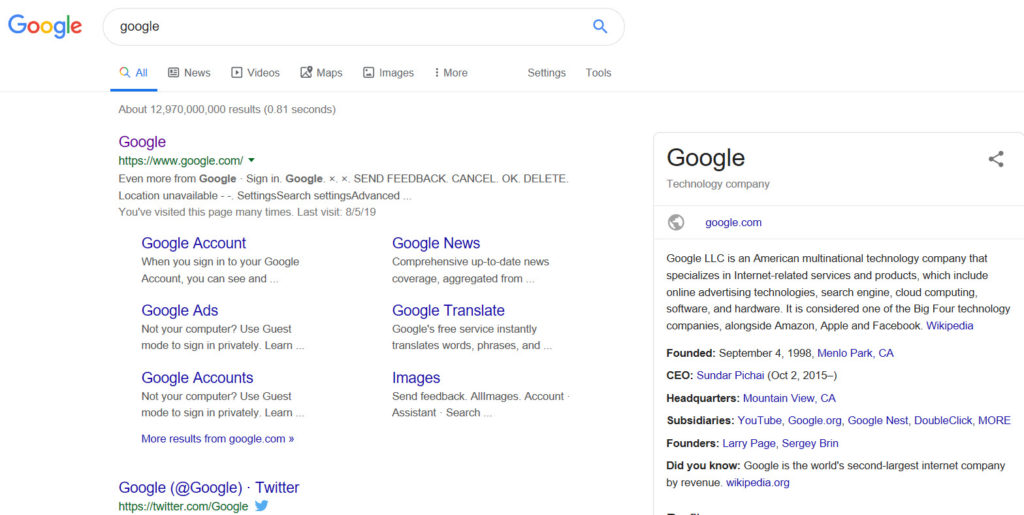Let’s face it, Google has supplemented our brain power like no other tool in the world. Its mission is something like “organizing the world’s information so it’s one click away.” Every directory ever published, every map, and phone book have passed into oblivion thanks to the genius of Google. And businesses know this because consumers know this.
Tarot Card number 2 is a snapshot of the Google results page above the fold (what can be seen without cursoring down) following a search of your brand name. When someone searches for you on Google, with what are they presented?
If an established brand, consumers are likely to see a large box on the right side of the page with company incidentals — what Google and the algorithm have gleaned, e.g., owner, headquarters, inception date, picture/logo, stuff like that. On the left side of the page is information more controlled by the user — typically beginning with copy from meta tags and labels associated with the home page. Other copy is hopefully scraped from paragraphs about what the brand Is and what the brand Does (Is-Does) often included there are some other organizing subheads like: About, Careers, Location. This area can be a mess of copy and bullet — not the best presentation of a brand and its value.
One can’t organize their brand’s Google results page because it is part machine driven and part human and coder driven. And in many cases the coders don’t even work for the company.
As all earthlings use Google many times each day, the ability to organize and synthesize your search results page is a key to brand building and brand management.
Peace.
(There are 6 Brand Strategy Tarot Cards. Brand Strategy Tarot Cards is a diagnostic offering of What’s The Idea? For more information write Steve@WhatsTheIdea.com)



